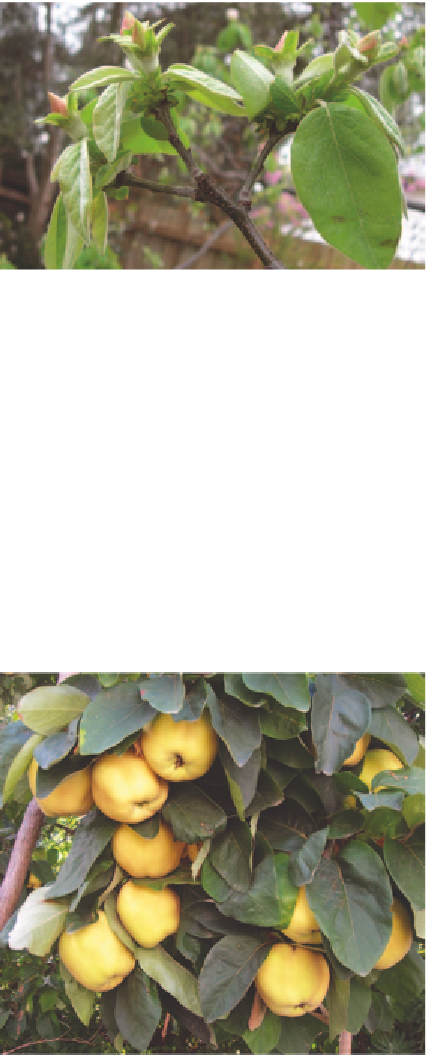Agriculture Reference
In-Depth Information
shorten these growths back to three or four
buds or remove them altogether if they are
crowding the canopy. Light and air through
the canopy are essential.
Suckers can be a problem so watch out
and deal with them sooner than later
(see page 46).
Harvest
When the great globular fruits start to turn
yellow and have a discernable fragrance, the
moment has come to harvest (see
Figure 6.36).
Figure 6.35
The new growth from this structure (bourse)
carries the blossom.
stimulate vegetative growth if that is what is
desired. In summer, shorten back any strong
vertical growth and eliminate spindly
unfruitful branchlets.
Even though quinces appear to be rock hard,
they do bruise surprisingly easily which
affects their storage capacity. Be gentle.
Often an established quince will throw up a
long whippy growth. It will ultimately fruit,
but its distance from the main branches will
mean that the fruit will be whipped about in
the wind damaging both fruit and other
branches. Summer is the perfect time to
Walnuts
Juglansregia
The English or Persian walnut is an enormous
tree that grows to a neat 10 × 10 m tree, so
probably not for the suburban garden. The
space it takes up is considerable helped along
by a secretion from its roots called juglone.
This substance effectively retards the growth
of other plants so that the walnuts take up the
aboveground space, as well as colonising
below ground to deter root competition.
Walnuts are ruthless.
This delicious nut can be self-fertile but
the best crops result from cross-pollination
from another cultivar. Not just any other
walnut will do, so check that you plant
compatible cultivars.
Walnuts have a deep taproot, and as they are
often sold bare-rooted, this is often been
damaged when lifted from the nursery field.
Figure 6.36
Ripe quinces have an unfortgettable
fragrance.

